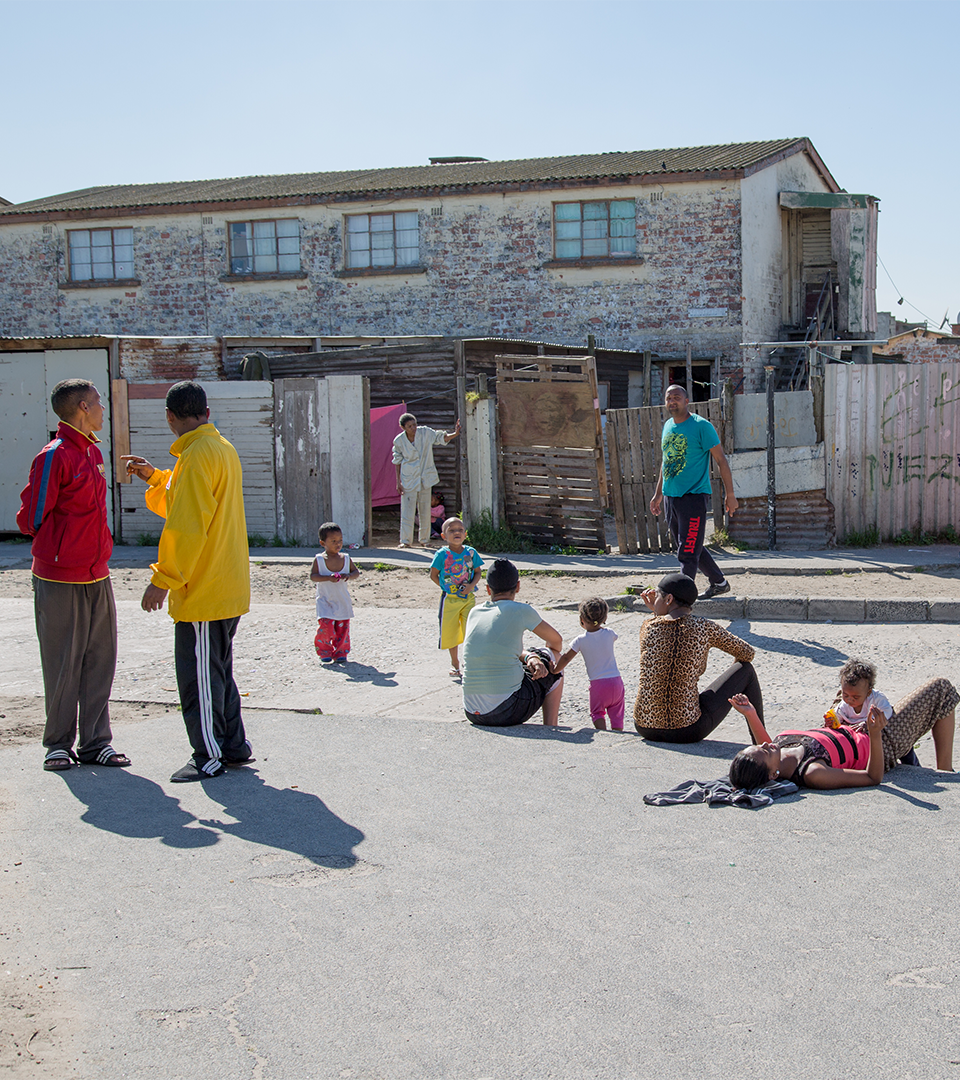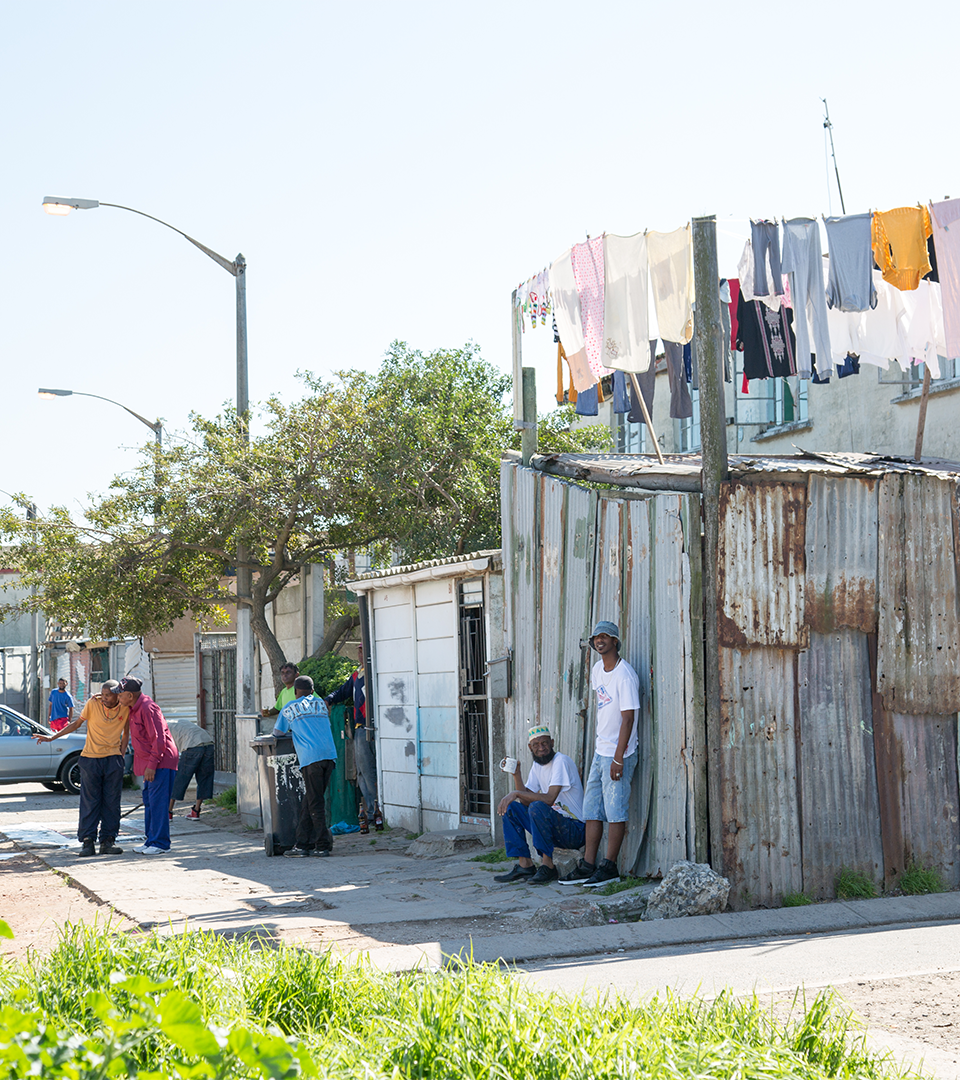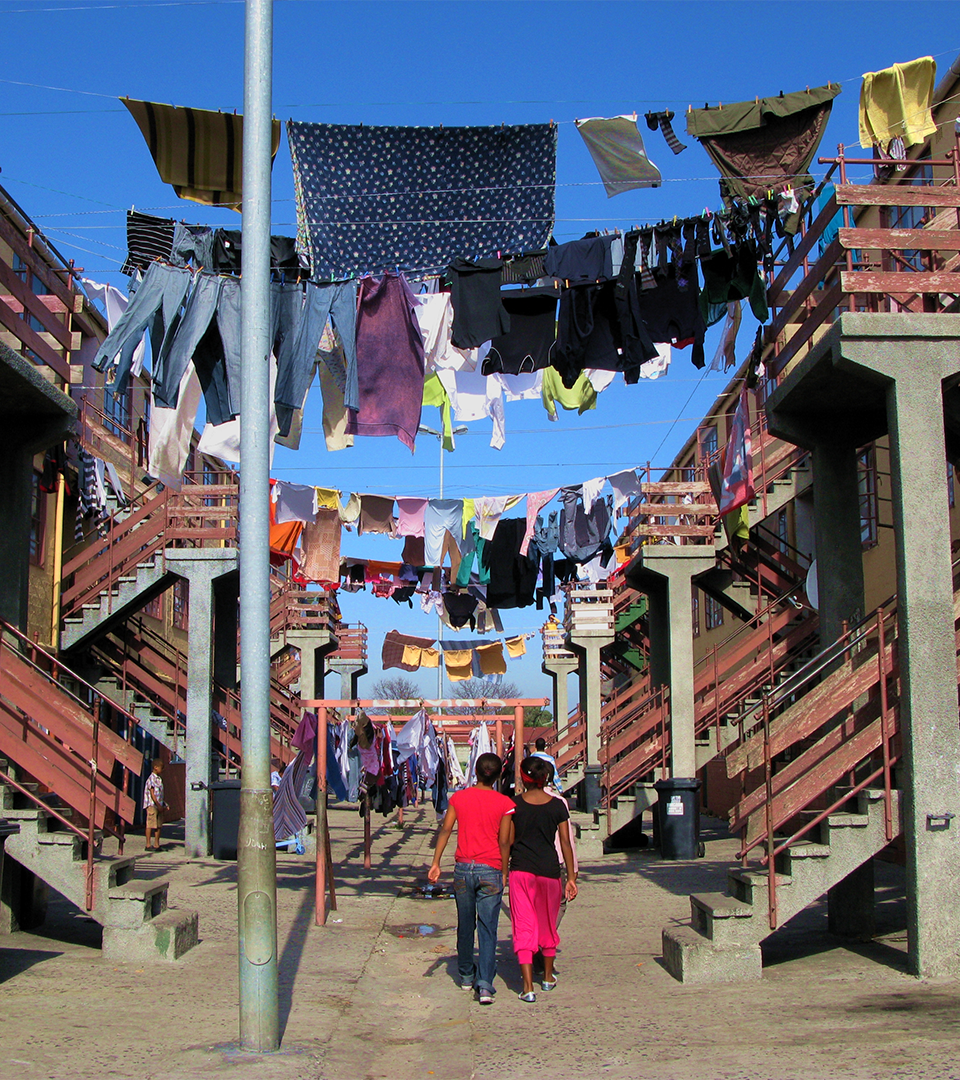Manenberg
-
Manenberg
Manenberg ist ein Stadtteil von Kapstadt, der von der Apartheid-Regierung 1966 geschaffen wurde, um die Cape Coloureds (Farbige) von den Weißen und Schwarzen zu trennen und dadurch den “Group Areas Act” von 1950 im täglichen Leben umzusetzen - der Apartheid-Ideologie folgend, dass unterschiedliche ethnische Gruppen nicht zueinander passen und daher der Kontakt zwischen ihnen auf ein Mindestmaß zu beschränken sei.
Manenberg is a suburb of Cape Town, created by the Apartheid government in 1966 to separate the Cape Coloureds from white and black people as a manifestation of the “Group Areas Act” from 1950, representing the fundamental apartheid ideology that ethnic groups are incompatible and thus the best solution is a minimum of contact between them.
-
Manenberg
Manenberg ist ein Stadtteil von Kapstadt, der von der Apartheid-Regierung 1966 geschaffen wurde, um die Cape Coloureds (Farbige) von den Weißen und Schwarzen zu trennen und dadurch den “Group Areas Act” von 1950 im täglichen Leben umzusetzen - der Apartheid-Ideologie folgend, dass unterschiedliche ethnische Gruppen nicht zueinander passen und daher der Kontakt zwischen ihnen auf ein Mindestmaß zu beschränken sei.
Manenberg is a suburb of Cape Town, created by the Apartheid government in 1966 to separate the Cape Coloureds from white and black people as a manifestation of the “Group Areas Act” from 1950, representing the fundamental apartheid ideology that ethnic groups are incompatible and thus the best solution is a minimum of contact between them.
-
Manenberg
Manenberg ist ein Stadtteil von Kapstadt, der von der Apartheid-Regierung 1966 geschaffen wurde, um die Cape Coloureds (Farbige) von den Weißen und Schwarzen zu trennen und dadurch den “Group Areas Act” von 1950 im täglichen Leben umzusetzen - der Apartheid-Ideologie folgend, dass unterschiedliche ethnische Gruppen nicht zueinander passen und daher der Kontakt zwischen ihnen auf ein Mindestmaß zu beschränken sei.
Manenberg is a suburb of Cape Town, created by the Apartheid government in 1966 to separate the Cape Coloureds from white and black people as a manifestation of the “Group Areas Act” from 1950, representing the fundamental apartheid ideology that ethnic groups are incompatible and thus the best solution is a minimum of contact between them.
Manenberg is a suburb of Cape Town, created by the Apartheid government in 1966 to separate the Cape Coloureds from white and black people as a manifestation of the “Group Areas Act” from 1950, representing the fundamental apartheid ideology that ethnic groups are incompatible and thus the best solution is a minimum of contact between them.
Manenberg is approximately 20 km away from the city centre of Cape Town, but only 3 km from Cape Town International Airport. It is flanked by two other coloured suburbs: Hanover Park to the west and Heideveld to the north. From the black township of Gugulethu to the east it is separated by a railway line. The station Nyanga Junction serves both districts.
Coloured residents from all suburbs around Table Mountain were forced to live in Manenberg between 1966 and 1970. The Apartheid Government built double- and triple-storey buildings during these five years for a planned population of 34.000 people. The buildings are arranged “face to face” and form the so-called courts. They were given female names like Nellie Court or Beatrix Court.
Because of housing shortages in the mid-1980s the maisonettes were built, especially for big families. Compared to the courts, the maisonettes were of a superior quality (three bedrooms, living-room, kitchen and a bathroom with hot water).
Nowadays the City assumes that 80.000 – 100.000 people live in Manenberg. The living conditions dramatically changed for the worse over the years. The families who got displaced in the 60ties and 70ties are still living in the flats, which had been built for them at that time. But their children hat no place to go. So they build a shack or wendy house in the backyards of the courts and maisonettes for their new young family. And the third generation did the same. During the last four decades all free space between the houses in Manenberg has been covered with shacks and wendy houses. So today the normality is that 20 people or more are sharing one kitchen and one bathroom in the flat or house of the first generation.
It has often been stated that the bad housing conditions and the lack of basic needs played a major role in the resistance of the Manenberg residents against the Apartheid regime. Some of the inhabitants formed an underground militant group, who organised tyre burnings, throwing stones and petrol bombs at targets and later resorted to taking up arms. Some residents think that it is this militant history that has led to the extreme violence we see in Manenberg nowadays.
Manenberg is also known because of the pianist Abdullah Ibrahim, who named one of his music albums “Manenberg” with the title song becoming his greatest success. One of the most popular Jazz-Clubs in Cape Town was Club Montreal, here some of the best Jazz-Musicians of our time like Jonathan Butler or Basil Coetzee had their debut.
Nowadays this suburb is well-known all over the country to be the worst place to live in and its inhabitants are stigmatized as gangsters or at least gangster-friends. If you type the word „Manenberg“ into one of the Internet search-engines, you will find:
“Manenberg – where gangs rule!”
“Schools in Manenberg closed due to gang violence!”
“Police swoop on gang-infested Manenberg!”





